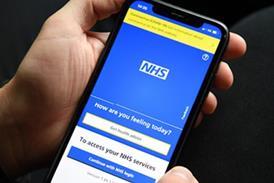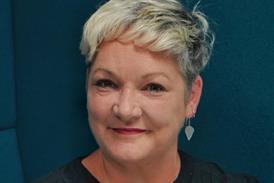Technology can support efforts to keep the UK’s growing number of older people out of hospital and in their own homes, says Sybo Dijkstra

Technology can support UK's growing number of older people
The good news is that we are all living longer. Currently, there are 10.8 million of us in the UK aged 65 and over.
‘As we get older we may need assistance to support our health and wellbeing’
Better yet is the fact that, today, we can look forward to a healthier life for longer.
Given the choice, most of us want to live independently in our own homes for as long as possible but, as we get older, we may need assistance to support our health and wellbeing.
The NHS faces a time of financial austerity. It must balance the need to reduce costs without compromising the quality of patient care.
- Telehealth special report: Remote control of care
- Download a PDF of the special report for free
- See HSJ’s news coverage and more in-depth features on technology
Tough times
It could be argued that the NHS needs to be more effective at keeping people out of hospital, helping people keep well and independent in their own homes as their lifespans extend.
‘Engagement with the patient is essential to make this work’
However, it cannot do this on its own.
Success will depend on its ability to forge alliances across the continuum of care, and create integration between secondary, primary, social and community care. Innovationin healthcare services and connected solutions can help to achieve these goals.
Engagement with the patient is essential to make this work.
Extending encouragement
Healthcare now extends beyond the hospital setting, increasingly bridging the gap between professional teams so that the home itself becomes an important setting for care.
This may require encouragement for patients to make better lifestyle choices and take more responsibility for their own care, supported by personalised, integrated care plans. This will help them to make an impact on their own health outcomes.
Taking these aspects into account may offer further opportunities for a more cost effective, proactive approach to prevention and population health management.
Clinicians can use decision support models to assess and stratify patients according to their chronic condition or the level of help they require.
Digital technology can help clinicians to maintain contact with patients, particularly those with mobility problems.
‘By collecting therapy data remotely from the patient, the clinician can intervene early if needed’
A web-based monitoring system such as Philips EncoreAnywhere, which remotely connects home ventilation and sleep therapy patients to their healthcare professional, can support.
By collecting therapy data remotely from the patient, the clinician can intervene early if needed. Similarly, if a patient is responding well the care provider can reduce the number of face to face appointments if they are unnecessary.
To continue to be well at an older age or to manage a long term condition requires a supportive culture and engagement of patients. It requires us to be responsive to a person’s needs as they age.
Taking a holistic view and using technology to increase independent living at home and moving towards a more integrated care approach will not only help address the challenges our healthcare system is facing but, more importantly, ensure our elderly population enjoys a better sense of health and wellbeing for longer.
Sybo Dijkstra is head of research at Philips UK
Telehealth special report: Remote control of care
- 1
- 2
 Currently reading
Currently readingClinicians in contact home and away




























No comments yet